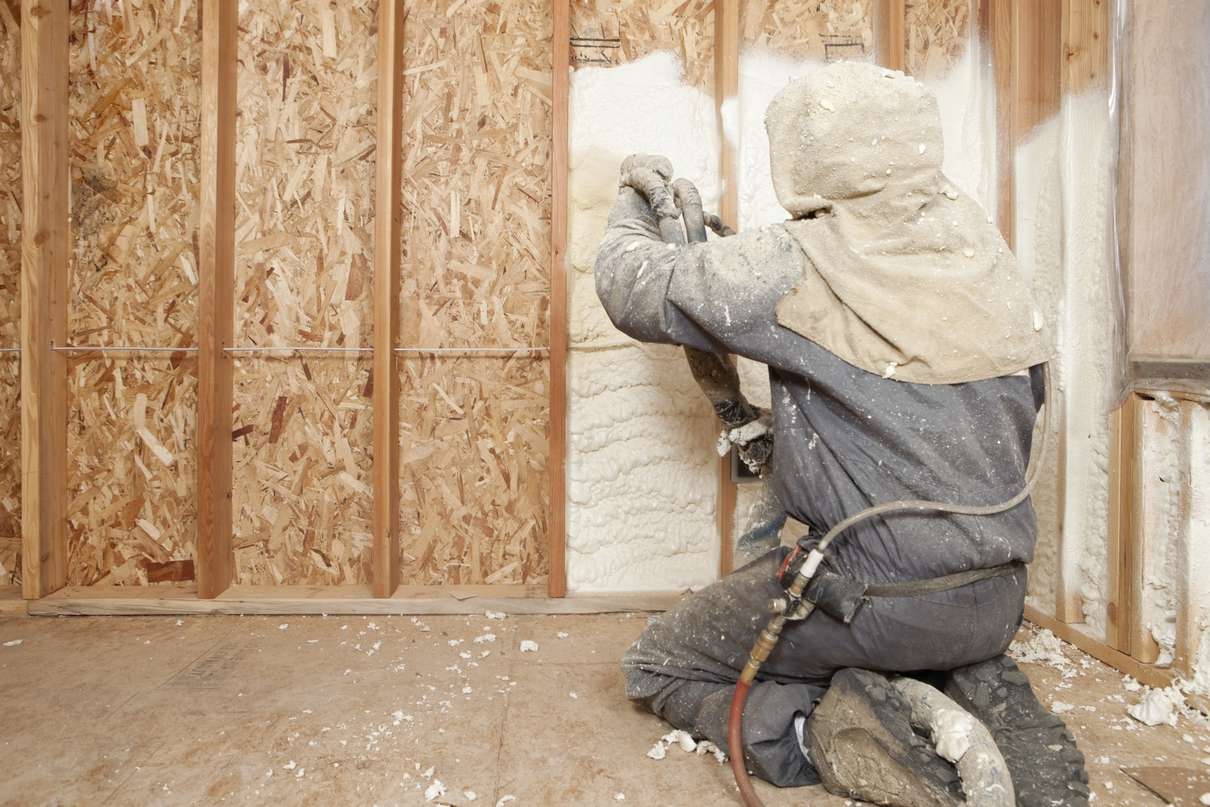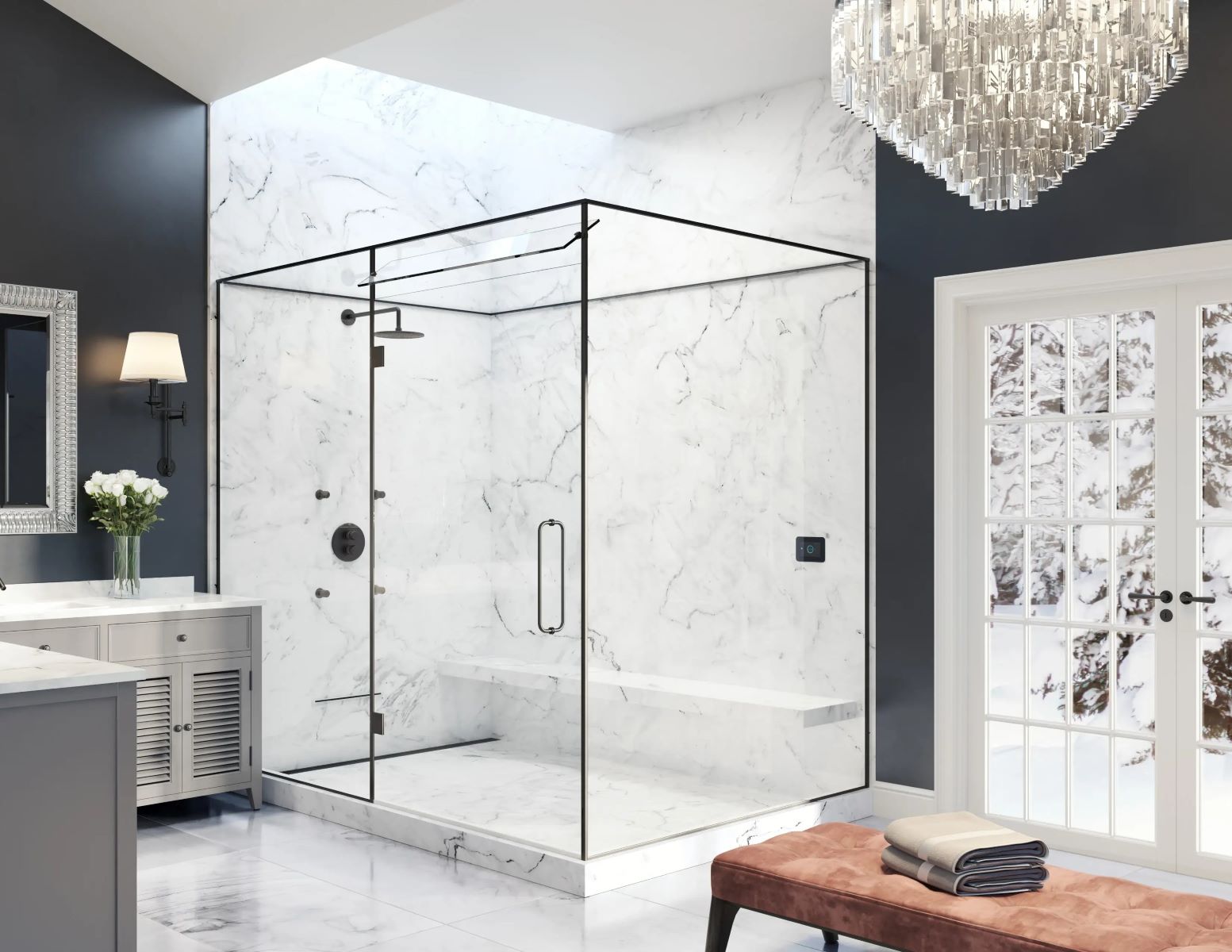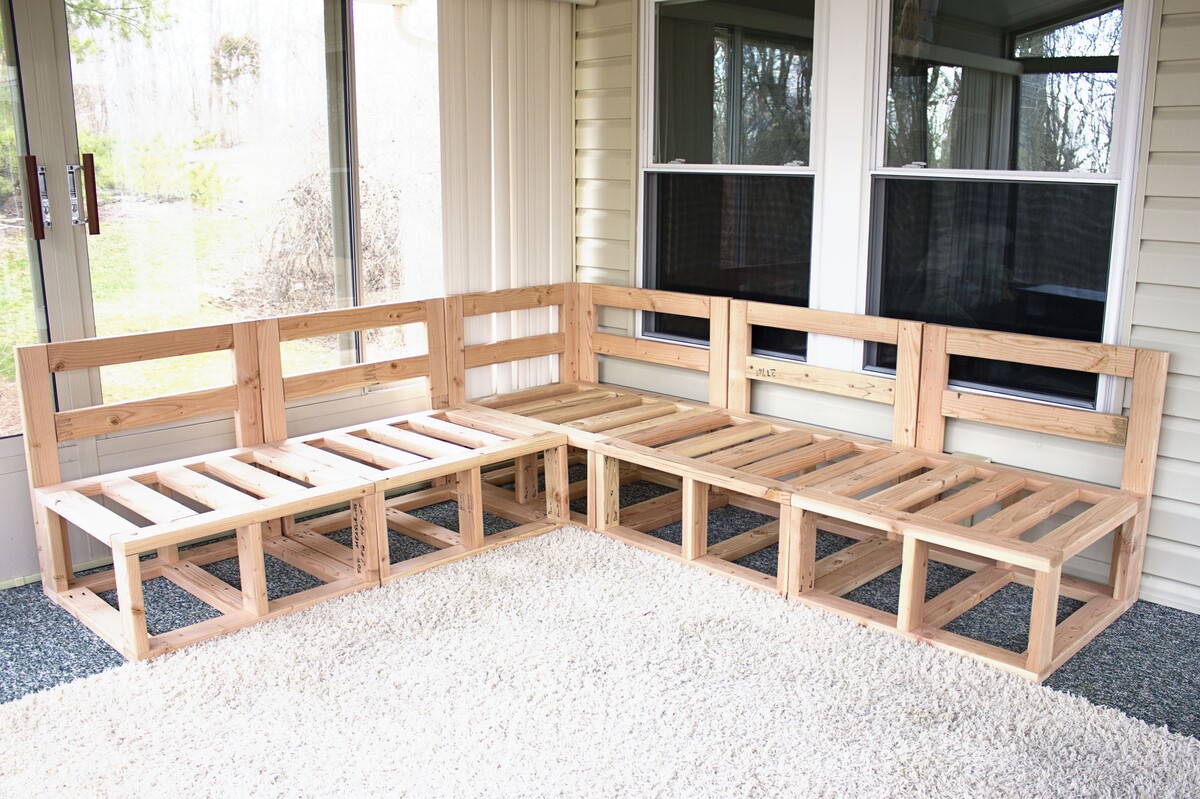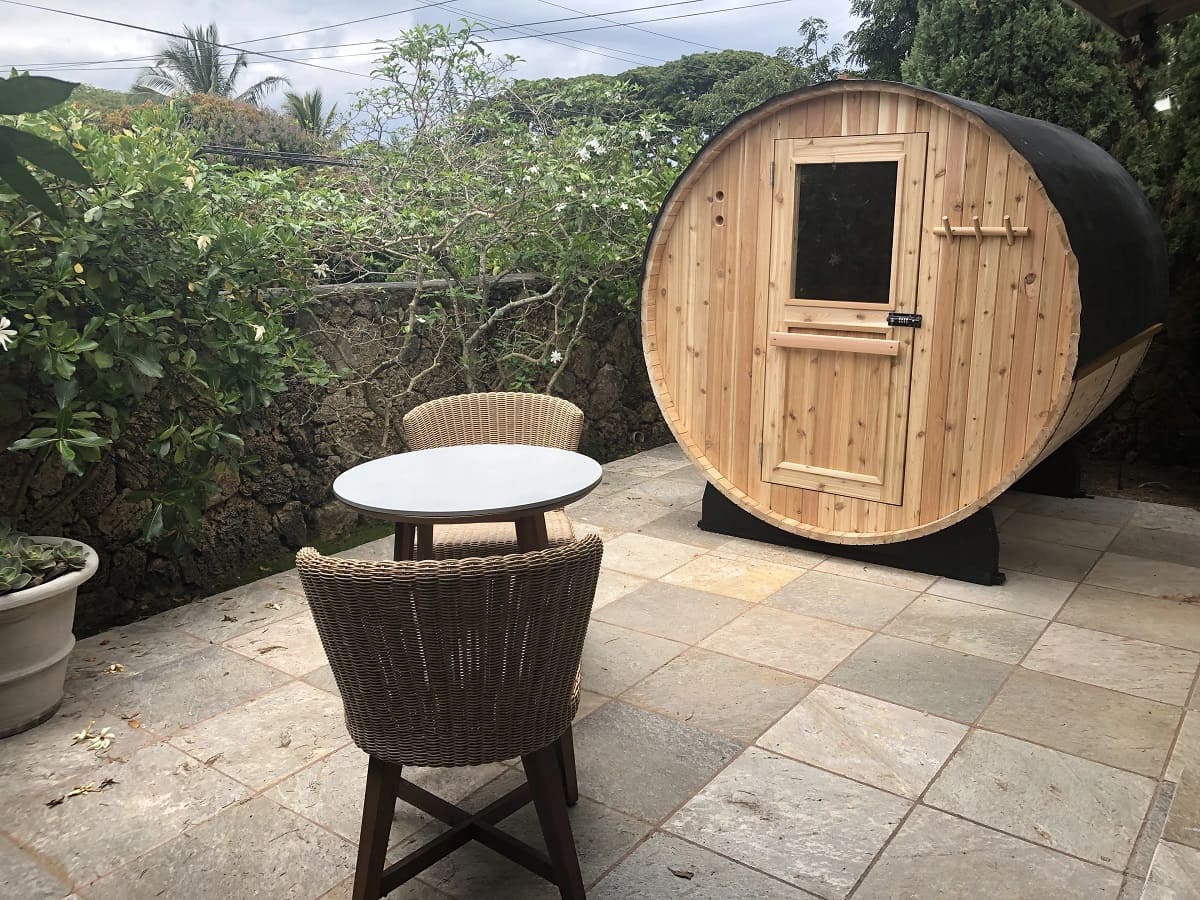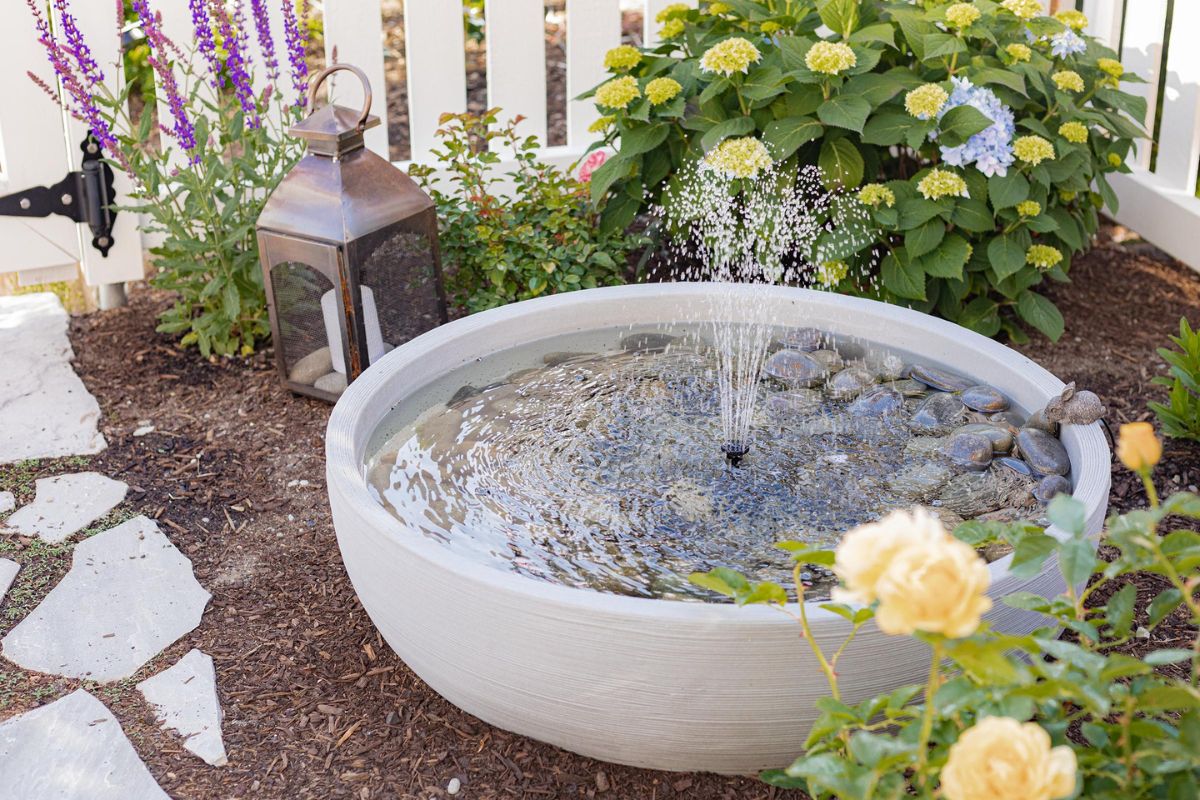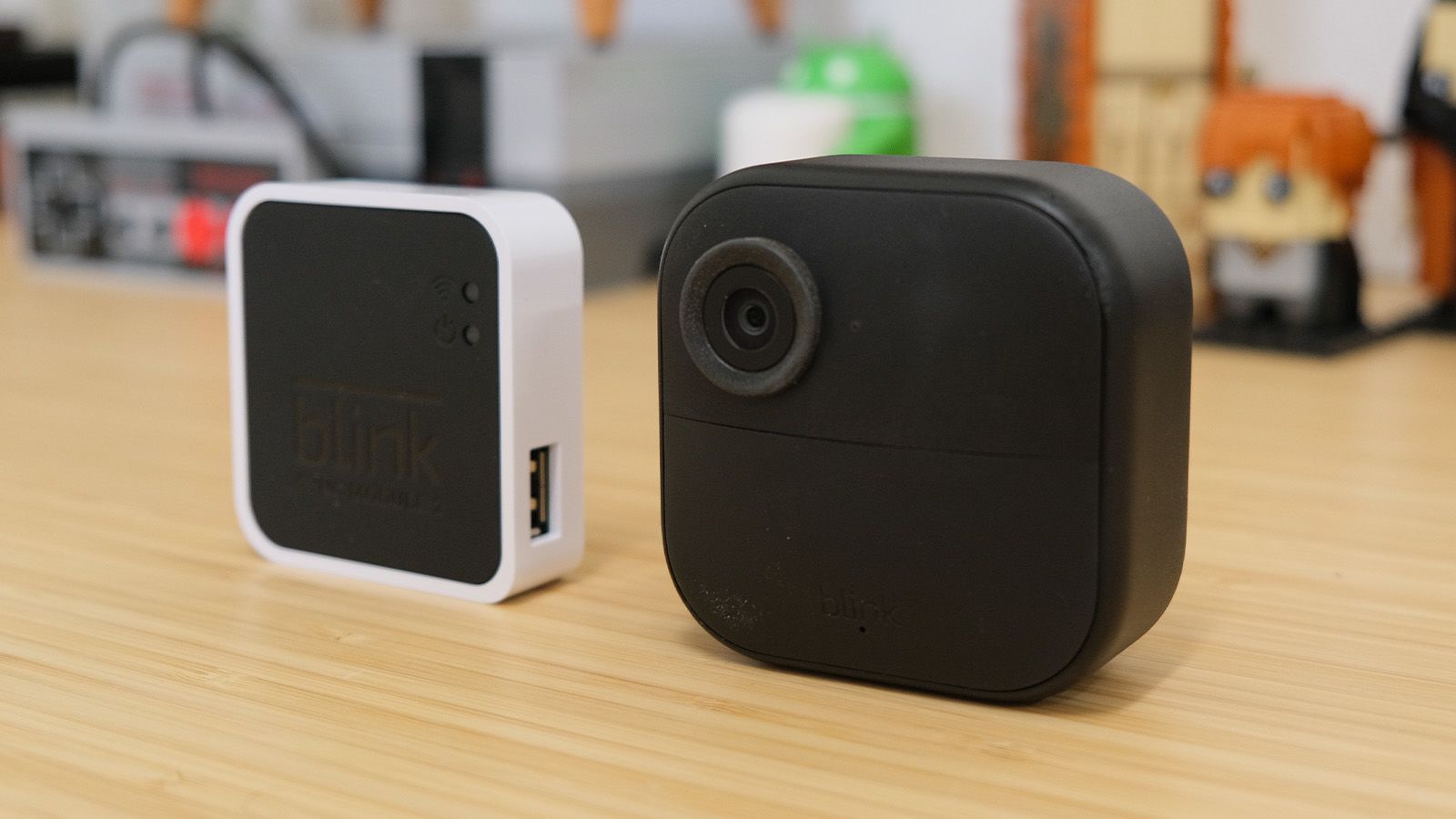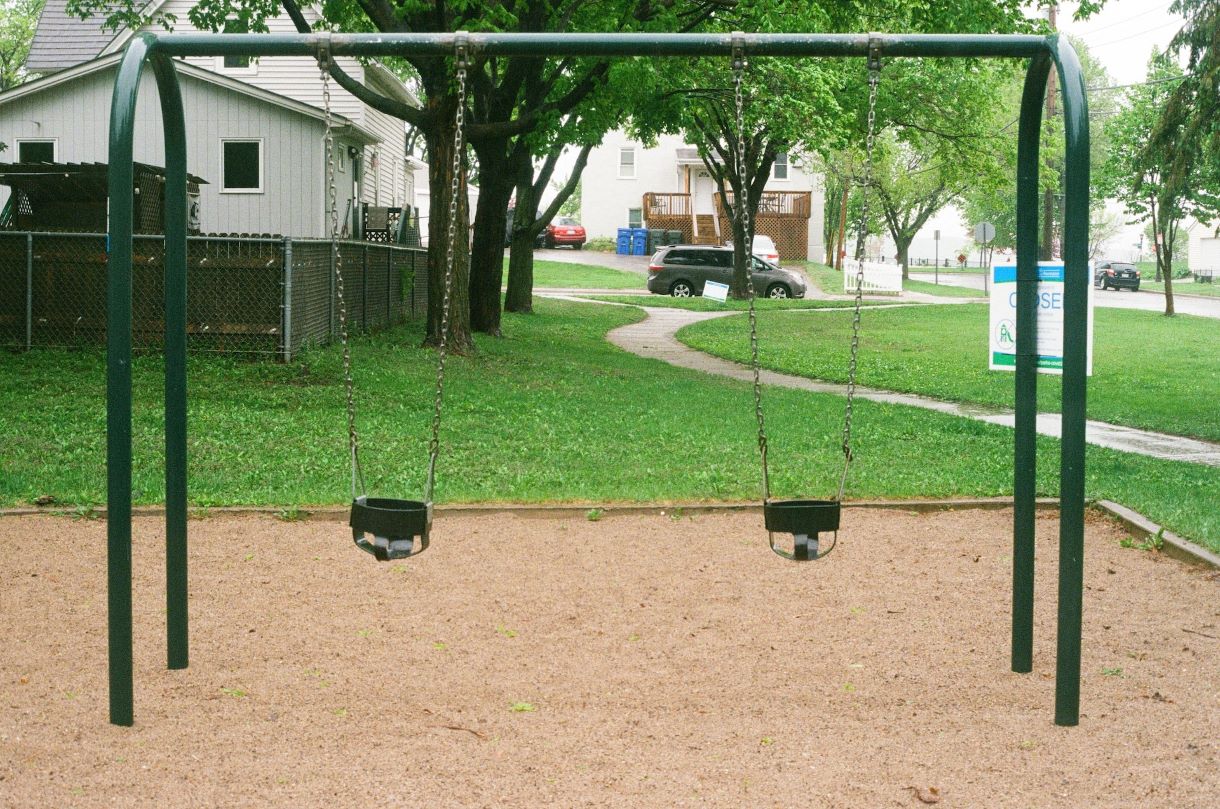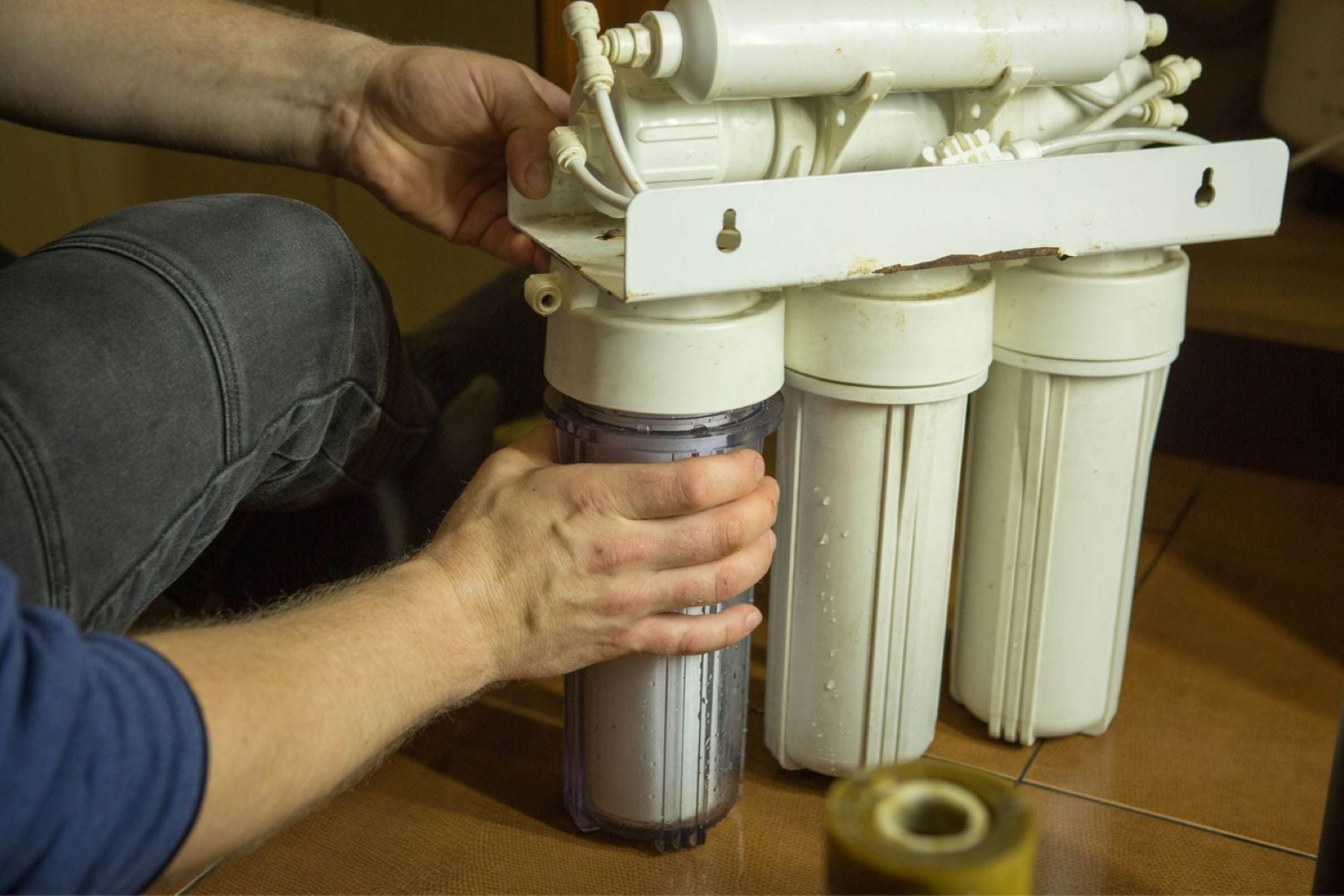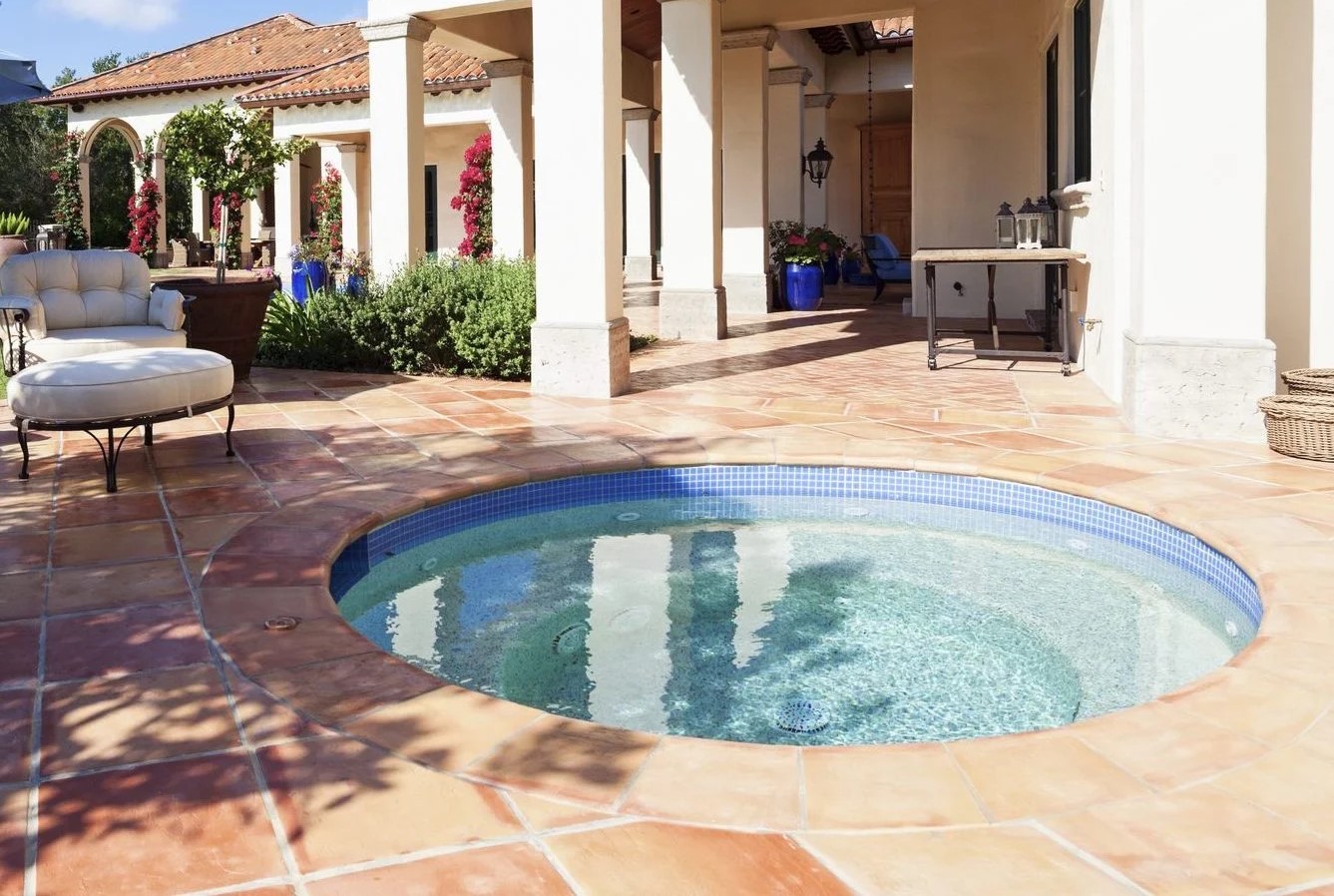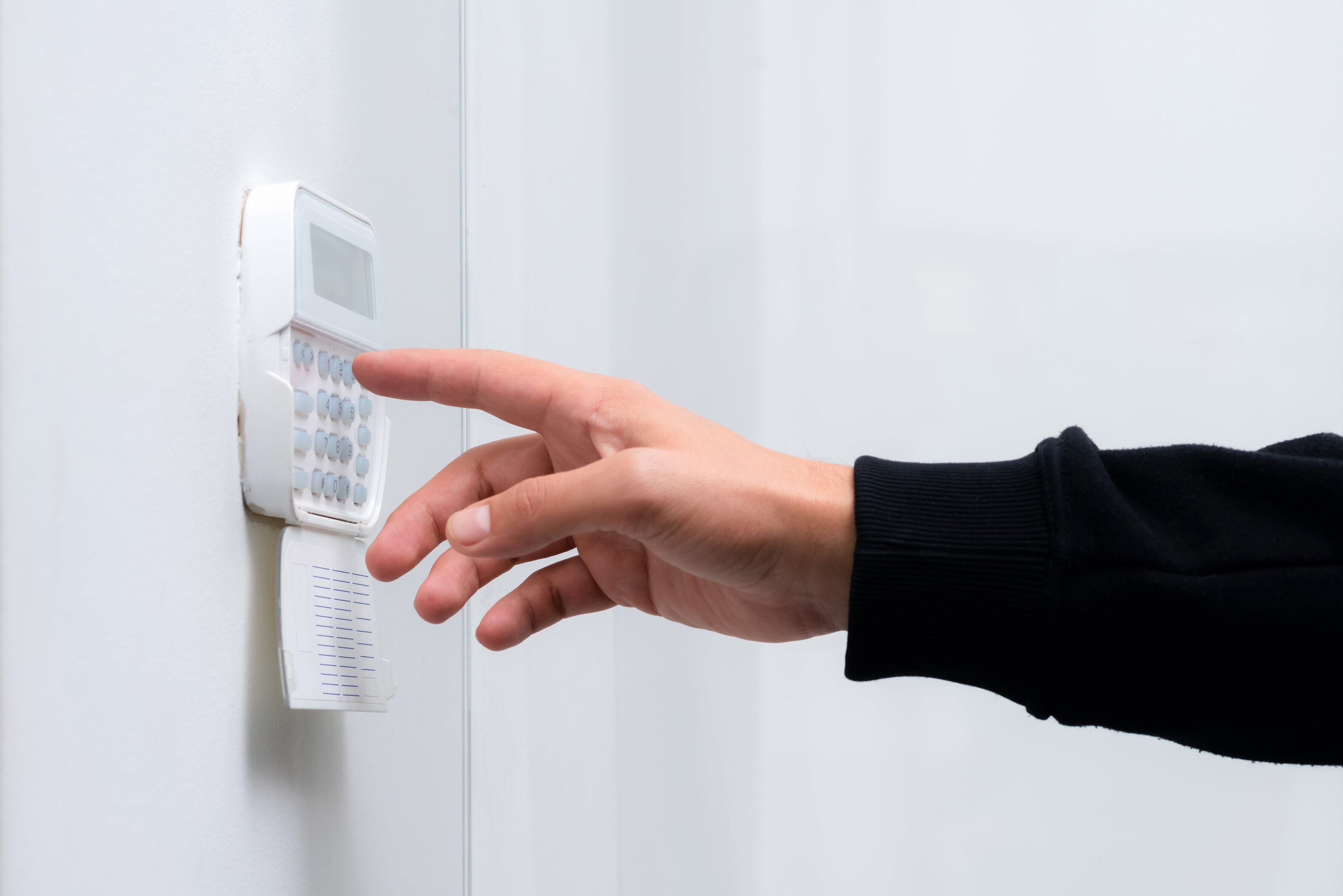Home>Home Security and Surveillance>How To Build Your Own Home Security System
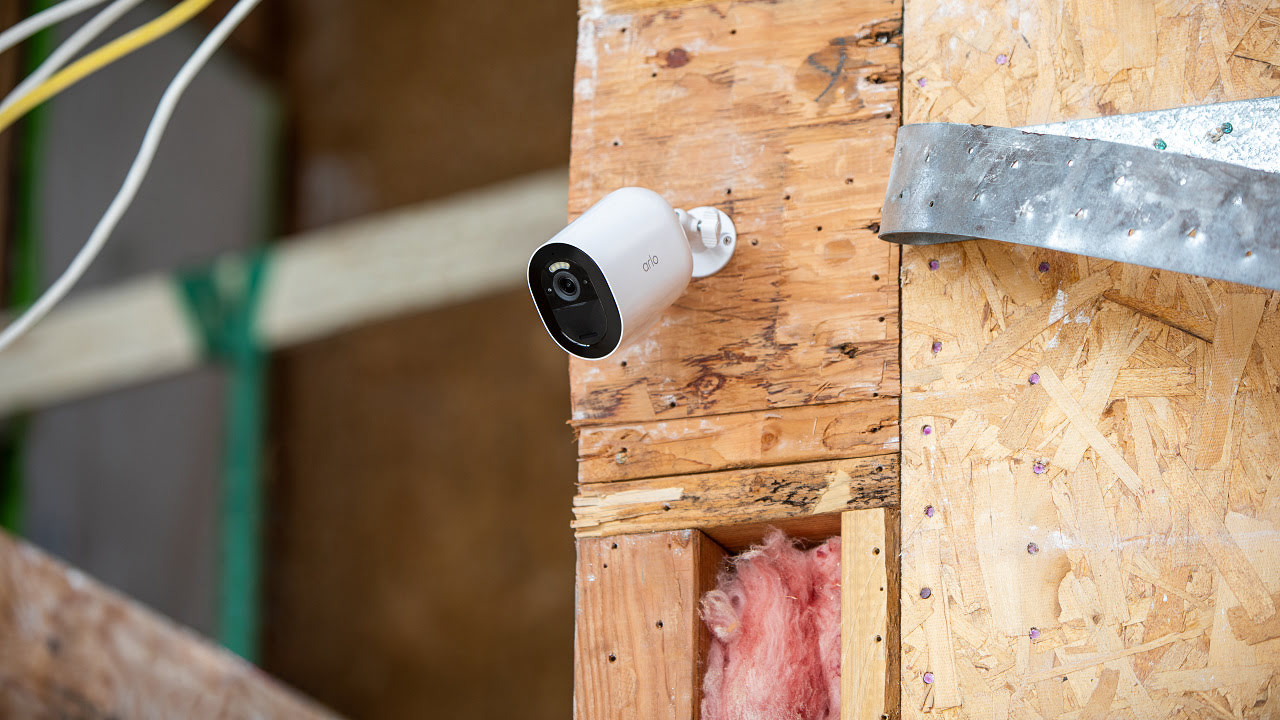

Home Security and Surveillance
How To Build Your Own Home Security System
Modified: March 6, 2024
Learn how to create your own home security system with our comprehensive guide. Increase security and surveillance with our step-by-step instructions and expert tips.
(Many of the links in this article redirect to a specific reviewed product. Your purchase of these products through affiliate links helps to generate commission for Storables.com, at no extra cost. Learn more)
Introduction
Welcome to the digital age, where the protection of our homes and loved ones has never been more important. With the rise in crime rates and the ease of access to our personal spaces, it has become imperative to invest in a reliable home security system.
However, purchasing a pre-packaged security system can be expensive and may not always meet your specific needs. That’s where building your own home security system comes into play. By customizing your system, you can ensure that it fits perfectly with your home and provides the level of security you desire.
In this comprehensive guide, we will take you through the process of building your own home security system. We’ll delve into the various components you’ll need, the considerations to keep in mind when selecting the right devices, the installation process, programming and customization options, as well as tips for maintaining and upgrading your system.
Whether you’re a tech enthusiast, a DIY lover, or simply someone who wants to take control of their home security, this article is designed to provide you with all the knowledge and guidance you need.
So, put on your safety goggles and let’s dive deep into the world of home security systems!
Key Takeaways:
- Building your own home security system allows you to customize it to fit your specific needs, providing peace of mind and protection for your loved ones. From selecting devices to programming and maintenance, you’re in control of your safety.
- Regular maintenance and upgrades are essential for keeping your home security system reliable and up-to-date. By staying informed about the latest technology, you can ensure your system remains efficient and effective in protecting your home.
Read more: How To Make Your Own Security Camera
Understanding Home Security Systems
Before diving into the process of building your own home security system, it’s crucial to understand the basics of how these systems work. A home security system is a network of interconnected devices and sensors designed to safeguard your home from potential threats such as burglaries, fires, and other emergencies.
The primary goal of a home security system is to detect any unauthorized entry or suspicious activity and alert the homeowner or monitoring center. It acts as a deterrent, preventing potential criminals from targeting your home, and provides you with peace of mind, knowing that your property is protected.
Home security systems come in various types and sizes, ranging from simple DIY setups to professionally installed and monitored systems. The most common types include:
- Wired systems: These systems use wires to connect the control panel to the sensors and devices throughout your home. While they can be more reliable, the installation process can be more complex and may require professional assistance.
- Wireless systems: These systems utilize wireless communication technology to connect the devices. They are easier to install and can be more flexible in terms of device placement. However, they may have limitations in terms of range, requiring closer proximity to a central hub or Wi-Fi network.
- Smart home systems: These systems integrate with your home’s smart devices, allowing you to control and monitor your security system remotely through a smartphone or computer. They often provide additional features such as home automation and integration with other smart home devices.
Regardless of the system type, a typical home security system consists of several essential components:
- Control panel: This acts as the central hub of the system, where you can arm or disarm the system, receive alerts, and access various settings.
- Security cameras: These devices capture video footage of your property and can be placed both indoors and outdoors. They serve as a visible deterrent and can provide valuable evidence in case of an incident.
- Door and window sensors: These sensors detect when a door or window is opened or closed. They trigger an alarm if activated when the system is armed.
- Motion detectors: These sensors detect movement within a designated area and can trigger an alarm if unauthorized activity is detected.
- Security alarms: These audible devices produce loud sounds when triggered, alerting occupants and discouraging intruders.
Understanding the basics of home security systems and the different components involved is essential for building a system that aligns with your specific needs. In the following sections, we will delve deeper into selecting the right security devices, installation techniques, and customizing your system to ensure optimal security for your home.
Assessing Your Security Needs
Before you start building your home security system, it is crucial to assess your security needs. Every home is unique, and understanding the vulnerabilities and potential risks specific to your property will help you make informed decisions about the components and features that are necessary for your system.
Here are some key factors to consider when assessing your security needs:
- Location: Evaluate the location of your home in terms of crime rates and neighborhood safety. This will give you an idea of the potential risks you may face and the level of security required.
- Property Size: Consider the size of your property, including the number of entry points such as doors and windows. Larger properties may require more sensors and devices to adequately cover all areas.
- Security Concerns: Identify your specific security concerns. Do you have valuable assets that need extra protection? Are you concerned about break-ins or potential fire hazards? Understanding your main security concerns will guide you in selecting appropriate devices.
- Lifestyle: Consider your lifestyle and daily routines. Do you travel frequently or have long periods away from home? Do you have family members who are home alone often? These factors will impact the level of monitoring and automation features you may require.
- Budget: Determine your budget for building the system. It is important to strike a balance between your security needs and affordability. Prioritize the essential components, and consider adding additional features as your budget allows.
Once you have assessed your security needs, you can start planning your home security system accordingly. Make a list of the specific devices and features you require, keeping in mind the areas that need the most attention and the level of monitoring and control desired. This will serve as a roadmap for the next steps in building your system.
Remember that while security technology plays a significant role in protecting your home, it is not the sole solution. Implementing other security measures such as strong locks, well-lit exteriors, and neighborhood watch programs can enhance the effectiveness of your home security system.
Now that you have a clear understanding of your security needs, let’s explore the different components that can be included in your home security system and how to choose the right ones for your specific requirements.
Components of a Home Security System
A well-designed home security system requires a combination of components that work together seamlessly to provide comprehensive protection. Each component serves a specific purpose and contributes to the overall effectiveness of the system. Here are the key components commonly found in a home security system:
- Control Panel: The control panel is the central command center of your security system. It allows you to arm or disarm the system, control various settings, and receive alerts. Look for a control panel that is user-friendly, intuitive, and offers advanced features such as touchscreen capabilities and remote access.
- Security Cameras: Security cameras are essential for monitoring your home, both internally and externally. They act as both a deterrent and a means of recording any suspicious activity. When selecting security cameras, consider factors such as resolution, field of view, night vision capabilities, and whether they are wired or wireless.
- Door and Window Sensors: These sensors detect when a door or window is opened or closed. They are typically placed on the frame and corresponding movable part of the door or window. When the sensor is triggered, it sends a signal to the control panel, which can then activate an alarm or send an alert. Door and window sensors are vital for detecting unauthorized entry and preventing break-ins.
- Motion Detectors: Motion detectors are designed to detect any movement within a given area. They are commonly used in hallways, stairways, and other areas where an intruder may pass through. When a motion detector detects movement, it sends a signal to the control panel, triggering an alarm. Look for motion detectors with adjustable sensitivity settings to avoid false alarms.
- Glass Break Sensors: Glass break sensors are specifically designed to detect the sound frequency of breaking glass. They are placed near windows or glass doors and can detect the distinct sound of glass shattering. When activated, they send a signal to the control panel, alerting you to the possibility of a break-in.
- Smoke and Carbon Monoxide Detectors: These detectors are crucial for protecting your home from fires and the presence of deadly carbon monoxide gas. They monitor the air for the presence of smoke or dangerous levels of carbon monoxide and sound an alarm when detected. Look for detectors that are interconnected so that if one detector is triggered, all detectors in the network will sound an alarm.
In addition to these primary components, there are several other optional components that you may consider adding to your home security system:
- Siren or Alarm: A loud siren or alarm can serve as a deterrent, alerting both occupants and neighbors of a potential threat. It can be integrated with your security system to sound when a sensor is triggered.
- Smart Locks: Smart locks provide an additional layer of security by allowing you to control access to your home remotely. You can lock or unlock doors using a smartphone app, assign temporary access codes for visitors, and receive notifications when the lock is used.
- Video Doorbell: A video doorbell allows you to see and communicate with whoever is at your door, even when you’re not home. It provides an added level of security by allowing you to verify visitors and monitor package deliveries.
- Smart Home Integration: Integrate your home security system with other smart home devices, such as smart lighting or smart thermostats, to create an interconnected and automated home security ecosystem.
When selecting components for your home security system, ensure compatibility and seamless integration between devices. Choose reputable brands that offer reliable technology and provide ongoing customer support. Additionally, consider the scalability and expandability of the system, allowing you to add or upgrade components as your security needs evolve.
Now that you have a good understanding of the components available, we can move on to the next step – choosing the right security devices for your specific needs.
Choosing the Right Security Devices
Choosing the right security devices for your home is a critical step in building an effective home security system. With a wide range of options available in the market, it’s essential to consider your specific needs, budget, and the level of security you require. Here are some factors to consider when selecting security devices:
- Quality and Reliability: Opt for security devices from reputable brands known for their quality and reliability. Read customer reviews and ratings to ensure that the devices have a good track record of performance and durability.
- Compatibility: Verify that the devices you choose are compatible with the control panel or security system you plan to use. This ensures seamless integration and avoids any compatibility issues.
- Wireless or Wired: Decide whether you prefer wireless devices or wired ones. Wireless devices offer flexibility in terms of installation and are less invasive since they require no drilling or wiring. Wired devices, on the other hand, may provide a more reliable connection but require professional installation.
- Range: Consider the range of the devices and ensure they can cover the necessary areas of your home. This is particularly important for devices such as motion detectors and door/window sensors.
- Features: Evaluate the features offered by each device and determine if they meet your specific requirements. For example, if you want to monitor your home remotely, look for devices that offer mobile app access or integration with smart home platforms. If you need night vision capabilities, prioritize security cameras with high-quality infrared sensors.
- Budget: Set a budget for your security devices and prioritize based on your needs. Consider the essentials first and then see if you have room for additional features or devices.
Now, let’s take a closer look at some of the key security devices commonly used in a home security system:
- Security Cameras: Choose security cameras that offer high-resolution video quality, wide viewing angles, night vision capabilities, and weatherproofing for outdoor use. Consider whether you need features such as pan, tilt, and zoom, and whether you prefer wired or wireless cameras.
- Door and Window Sensors: Look for sensors that are easy to install and can fit various types of doors and windows. Consider the range and battery life of the sensors, as well as any additional features such as tamper detection.
- Motion Detectors: Select motion detectors with adjustable sensitivity levels to prevent false alarms. Decide between passive infrared (PIR) motion detectors or dual-technology motion detectors that combine PIR with microwave technology for enhanced accuracy.
- Glass Break Sensors: Find glass break sensors that are compatible with different types of glass and offer a wide detection range. Look for sensors that can differentiate between the sound of breaking glass and other loud noises to avoid false alarms.
- Smoke and Carbon Monoxide Detectors: Choose detectors that have reliable smoke and carbon monoxide sensing capabilities. Look for models that offer self-monitoring features, battery backup, and the ability to interconnect with other detectors.
It’s important to create a comprehensive list of the security devices you need based on your assessment of potential risks and vulnerabilities. Consider consulting with a security professional or reaching out to reputable security system providers for guidance in selecting the most suitable devices for your home.
Once you have chosen the right security devices, you can proceed with the installation and setting up of your home security system, which we will cover in the following section.
When building your own home security system, make sure to install motion sensor lights around the perimeter of your home to deter potential intruders.
Read more: How To Build Your Own Bathroom Vanity
Installing and Setting Up Your Home Security System
Now that you have selected the right security devices for your home, it’s time to install and set up your home security system. While the process may vary depending on the specific devices you have chosen, here are some general steps to follow:
- Read the Instructions: Start by thoroughly reading the user manuals and installation guides provided with each security device. Familiarize yourself with the requirements, recommendations, and step-by-step instructions for installation.
- Plan Device Placement: Take some time to plan where you want to install each security device. Consider the ideal locations for the control panel, security cameras, door/window sensors, motion detectors, and other components. Ensure that they are strategically placed to cover vulnerable areas and provide optimal coverage.
- Install the Control Panel: Begin by installing the control panel in a central location of your home that is easily accessible. Connect it to a power source and follow the manufacturer’s instructions for connecting it to your internet or phone line, if applicable.
- Mount Security Cameras: Install your security cameras according to the manufacturer’s guidelines. Ensure they are positioned at the desired angles and heights to capture the necessary areas. Adjust settings such as focus, field of view, and night vision capabilities as needed.
- Secure Door and Window Sensors: Install door and window sensors on the frames and movable parts of the doors and windows you want to protect. Ensure they are aligned correctly and securely in place. Follow the provided instructions for pairing the sensors with the control panel.
- Place Motion Detectors: Mount motion detectors in strategic locations such as hallways, stairways, and areas where intruders are likely to pass through. Make sure they are properly positioned and adjusted to minimize false alarms.
- Connect and Test Devices: Once all the devices are installed, connect them to the control panel according to the manufacturer’s instructions. Follow the provided guidelines to test each device to ensure it is functioning properly and communicating with the control panel.
- Set Up Notifications and Alerts: Configure the settings on your control panel or security system to receive notifications and alerts when a sensor is triggered or if other events occur. This may involve setting up email notifications, text messages, or push notifications to your smartphone.
- Create User Codes: If your home security system supports user codes, set up personalized codes for each member of your household. This allows you to track who arms and disarms the system and can be useful for managing access permissions.
- Register and Activate Monitoring: If you have opted for professional monitoring services, complete the necessary registration and activation procedures. Ensure that your security system is connected and communicating with the monitoring center.
It’s important to note that some devices, such as security cameras or complex wired systems, may require professional installation. If you are not comfortable with the installation process or want to ensure a seamless setup, consider hiring a professional security system installer.
Once your home security system is successfully installed and set up, take the time to familiarize yourself with its features and functionality. Test the system regularly to ensure proper functioning, and make any necessary adjustments to optimize its performance.
In the next section, we will explore how you can program and customize your home security system to suit your specific preferences and requirements.
Programming and Customizing Your Home Security System
After successfully installing your home security system, it’s time to program and customize it according to your specific needs. By customizing the settings and features of your system, you can maximize its effectiveness and tailor it to your preferences. Here are some key steps to programming and customizing your home security system:
- Access Control: Set up user codes or credentials for each member of your household. This allows you to track who arms and disarms the system and enables individualized access permissions. Consider assigning unique codes for guests or service providers to ensure accountability.
- Arming Modes: Determine which arming modes are suitable for different scenarios. Typical arming modes include “Away” mode when the house is empty, “Home” mode for when occupants are present, and “Night” mode for securing the home while sleeping. Customize the arming modes based on your lifestyle and security requirements.
- Notifications and Alerts: Configure the system to send notifications and alerts to your preferred communication channels, such as email or mobile app notifications. Specify the types of events or triggers that should generate alerts, such as sensor activations, system faults, or low battery levels.
- Automation: If your security system is integrated with smart home devices, explore automation options. Customize actions such as turning on lights when motion is detected at night or adjusting thermostats when the system is armed or disarmed. This adds an extra layer of convenience and enhances your overall home security experience.
- Emergency Contacts: Set up a list of emergency contacts, including friends, family members, and your local authorities. In case of an alarm activation or emergency, these contacts can be notified automatically, providing prompt assistance and support.
- Testing and Maintenance: Regularly test your security system to ensure that all devices are functioning correctly. Schedule routine maintenance, such as battery replacements or cleaning of sensors and cameras, to keep your system in optimal condition.
- Integration with Mobile Devices: If your security system supports mobile app integration, take advantage of this feature. Install the mobile app on your smartphone or tablet to easily monitor and control your security system remotely. Familiarize yourself with the app’s features, including the ability to view live camera feeds or receive real-time alerts.
- Password Protection: Secure your control panel and associated accounts with strong passwords. Change default passwords to prevent unauthorized access to your system and ensure the privacy and security of your data.
- System Updates: Stay updated with the latest firmware or software releases for your security devices and control panel. Regularly check for updates from the manufacturers and apply them to benefit from security enhancements, bug fixes, and new features.
Remember that customization options may vary depending on the specific features and capabilities of your home security system. Consult the user manual, manufacturer’s website, or contact customer support for detailed instructions on customizing your particular system.
By programming and customizing your home security system, you can create a personalized and efficient security solution that aligns with your lifestyle and provides peace of mind. In the final section, we will provide some valuable tips for maintaining and upgrading your home security system.
Monitoring and Managing Your Home Security System
Monitoring and managing your home security system is crucial to ensure its effectiveness and maintain the safety of your home and loved ones. By staying vigilant and actively engaging with your security system, you can respond promptly to any suspicious activity or emergencies. Here are some important tips for monitoring and managing your home security system:
- Regularly Check System Status: Take a few moments each day to check the status of your security system. Ensure that all devices are communicating properly with the control panel and that there are no system faults or low battery warnings.
- Review Security Footage: If you have security cameras installed, regularly review the footage to identify any unusual or suspicious activity. This allows you to take appropriate action and provides valuable evidence in case of an incident.
- Respond to Alerts Promptly: When you receive notifications or alerts from your security system, respond promptly. Investigate any sensor activations or alarms triggered and verify the cause. If necessary, contact emergency services or other relevant authorities.
- Manage User Access: Regularly update and manage user codes or access credentials for your security system. Remove or deactivate any unused or unwanted codes to maintain control over who has access to your home.
- Professional Monitoring: Consider subscribing to professional monitoring services. With 24/7 monitoring, trained professionals can quickly assess and respond to alarm activations, contacting the necessary authorities on your behalf.
- Remote Access: Maximize the benefits of remote access capabilities. Use your smartphone or computer to remotely monitor and control your security system, allowing you to arm or disarm the system, view live camera feeds, or receive alerts from anywhere.
- Regularly Test the System: Perform regular system tests to ensure that all devices, sensors, and alarms are functioning correctly. This helps identify any issues or malfunctions that may require attention or maintenance.
- Train Household Members: Educate all members of your household on the proper operation and use of the security system. Make sure they know how to arm and disarm the system, properly use keypad codes, and respond in case of an emergency.
- Keep Emergency Contacts Updated: Maintain an up-to-date list of emergency contacts, including local authorities, fire departments, and medical services. Ensure that all necessary phone numbers are readily available in case of an emergency.
- Security System Upgrades: Stay informed about the latest advancements in home security technology. Regularly evaluate your system’s performance and consider upgrading components or adding new features to enhance the overall security of your home.
Remember that your home security system is only as effective as your active involvement in monitoring and managing it. By consistently following these tips and being proactive in the management of your security system, you can maintain a high level of security and peace of mind.
In the final section, we will provide you with some additional tips for maintaining and upgrading your home security system to ensure optimal performance.
Tips for Maintaining and Upgrading Your Home Security System
Maintaining and periodically upgrading your home security system is crucial to ensure its longevity, efficiency, and effectiveness. By following these tips, you can extend the lifespan of your system, keep it up-to-date with the latest technology, and continuously improve its performance:
- Regular System Inspections: Conduct routine inspections of your security system, checking for any signs of wear and tear, loose connections, or physical damage. Replace or repair any faulty devices or components promptly.
- Test Sensors and Alarms: Regularly test the functionality of sensors, alarms, and other devices that make up your security system. Verify that they are working correctly, trigger alarms when necessary, and ensure proper communication with the control panel.
- Replace Batteries: Replace batteries in your security devices as per the manufacturer’s recommended schedule. This includes batteries in sensors, control panel backup batteries, and any other battery-powered components. Regularly check battery levels and swap out depleted batteries promptly.
- Upgrade Firmware and Software: Stay up-to-date with the latest firmware or software releases provided by the manufacturer. These updates often include bug fixes, security patches, and performance improvements. Check the manufacturer’s website or contact their customer support to ensure you have the latest version.
- Consider Professional Maintenance: If you are not confident in maintaining your security system yourself, consider hiring a professional for regular maintenance and inspections. They can check the overall system, perform necessary repairs or updates, and ensure optimal performance.
- Monitor Network Security: If your system is connected to your home network or accessible via the internet, regularly update and secure your network. Change default passwords, use strong encryption, and keep routers and other network devices up-to-date with the latest firmware.
- Review System Logs: Regularly check the logs or history stored in your security system to identify any suspicious or unusual activity. This can help you detect potential security breaches, system faults, or unauthorized access attempts.
- Upgrade Camera Quality: If your security cameras have lower resolution or outdated technology, consider upgrading to higher-resolution cameras with improved image quality. High-definition cameras provide clearer footage, making it easier to identify individuals or incidents.
- Expand Coverage: Assess your current security system and determine if there are any areas with insufficient coverage. Consider adding additional sensors, cameras, or alarms to cover blind spots or vulnerable points of entry.
- Explore Smart Home Integration: If your security system allows for smart home integration, consider adding compatible smart devices to enhance your security. This can include smart lighting, smart locks, or voice-controlled assistants that work together to create an interconnected ecosystem.
Regular maintenance and upgrades are essential to keeping your home security system in optimal condition. By following these tips, you can ensure that your system remains reliable, up-to-date, and capable of providing the level of protection your home deserves.
Remember, as technology evolves, new features and advancements in home security become available. Stay informed about the latest trends and innovations in the industry to make informed decisions when upgrading your system.
Congratulations! With the knowledge gained from this guide, you are well-equipped to build, monitor, and maintain a comprehensive and efficient home security system. By customizing your system to fit your needs and regularly maintaining and upgrading it, you can enjoy the peace of mind knowing that your home and loved ones are protected.
Read more: How To Build Your Own Outdoor Kitchen
Conclusion
Building your own home security system is a rewarding and empowering process. By customizing your system, you can create a tailored solution that meets your specific security needs and provides peace of mind. Throughout this guide, we’ve covered the essential steps, from understanding the basics of home security systems to selecting the right devices, installing and setting up the system, programming and customizing its features, and finally monitoring, managing, and maintaining it.
Remember, the key to a successful home security system lies in assessing your security needs, selecting reliable components, and ensuring proper installation and customization. Regular testing, monitoring, and maintenance will help keep your system in optimal condition and maximize its effectiveness.
As technology continues to advance, consider staying informed about the latest innovations in the home security industry. Upgrading your system periodically can provide access to new features, enhanced performance, and improved security measures.
Your journey to a safer home begins with taking action. Use the knowledge gained from this guide to start building your own home security system, confident in the fact that you have taken control of your safety and the protection of your loved ones.
Now, it’s time to roll up your sleeves, make use of the information provided, and start building the home security system that best fits your needs. Stay vigilant, keep safety a priority, and enjoy the peace of mind that comes with knowing your home is secure.
Frequently Asked Questions about How To Build Your Own Home Security System
Was this page helpful?
At Storables.com, we guarantee accurate and reliable information. Our content, validated by Expert Board Contributors, is crafted following stringent Editorial Policies. We're committed to providing you with well-researched, expert-backed insights for all your informational needs.
